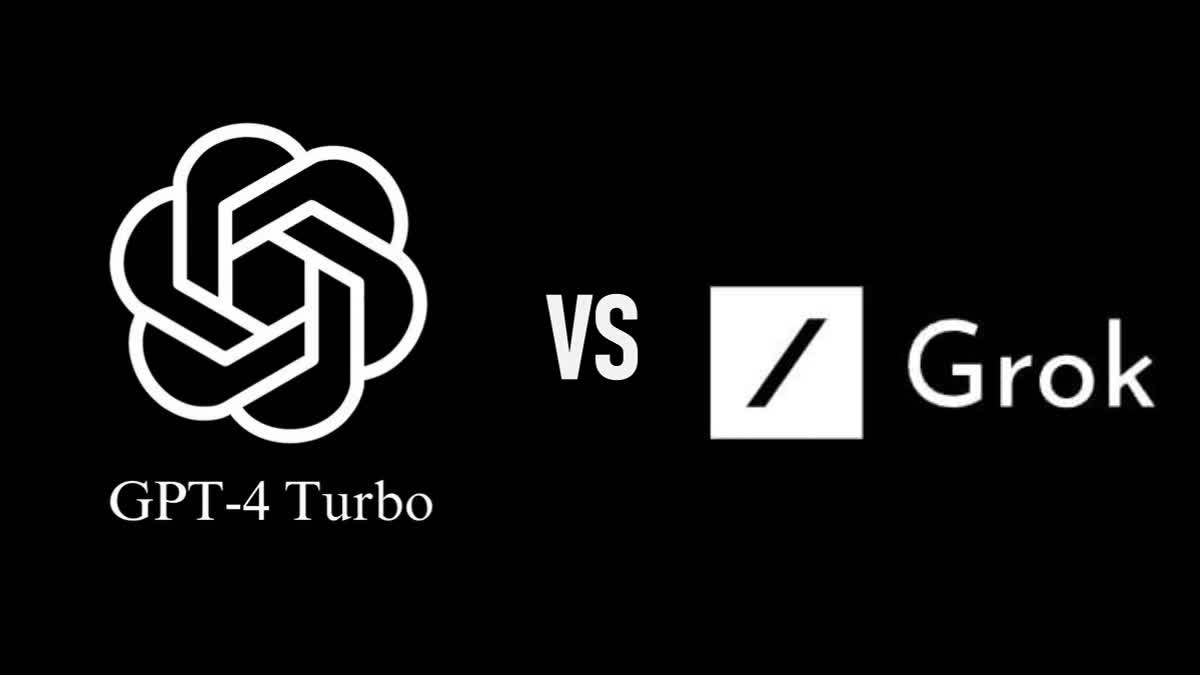Hyderabad: Microsoft-backed artificial intelligence startup OpenAI recently unveiled its latest model, GPT-4 TurboAI, at DevDay 2023, the maiden development conference held by the company. This enhanced model promises a host of improvements over its predecessor, GPT-3.5, and is already creating a buzz in the AI world.
The development also becomes more significant as it came just after Elon Musk launched the xAI, Grok, boasting to be the most reliable and update AI chatbot.
Here are some comparisons between the two leading chatbots:
Source of data-
Grok- Grok is trained using real-time data from the X platform. Its access to real-time information allows it to stay updated on global events and serve as a research assistant, providing quick access to information and generating ideas.
GPT-4 Turbo- The popular ChatGPT chatbot banks on a diverse data from sources like Common Crawl, web content, books, and Wikipedia. This method is sometimes called scraping, which makes it the large language model (LLM).
Availability-
Grok- Elon Musk's Grok is currently available to a select group of early stage beta testers. The billionaire announced that a more stable version of the Grok beta will be available to X Premium+ subscribers very soon.
GPT-4 Turbo- The GPT-4 Turbo model is now available for developers in preview and will be released to the public in the coming weeks. Notably, OpenAI's ChatGPT was launched in November 2022, and has been available to public since then.
Pricing-
Grok- As per the company, once Grok rolls out to more widely X Premium+ subscribers, it will effectively be priced at $16 a month.
GPT-4 Turbo- ChatGPT pricing starts with a free tier, which gets you access to a version of the chatbot running the older GPT-3.5 large language model (LLM).
Responses-
Grok- Elon Musk, on his X handle claimed of funny and sarcastic responses from Grok, which will overpower ChatGPT's dry responses.
GPT-4 Turbo- OpenAI has been known to deliver on-point answers. The chatbot declines to answer if it does not have suitable information on the question asked by the user.
Analysis: GPT-4 Turbo
One significant upgrade with GPT-4 Turbo is its larger context window, allowing it to process up to 128,000 tokens, a substantial increase from GPT-3.5's 8,000 tokens. This means GPT-4 Turbo can grasp more extensive information and make connections across lengthy documents, leading to more coherent and insightful responses.
Another advantage of GPT-4 Turbo is its knowledge base, which has been updated to April 2023, making it more current than GPT-3.5, which was last updated in September 2021. Additionally, GPT-4 Turbo includes features like DALL-E 3 AI-generated images, text-to-speech capabilities, and six preset voices for user customisation.
OpenAI has also made it easier for users to create custom chatbots, expanding beyond enterprise and business users. This move opens up the possibility of personalised AI chatbots appearing in various apps and websites.
Perhaps one of the most significant selling points of GPT-4 Turbo is its affordability. It costs considerably less for developers to use, with input and output prices of $0.01 and $0.03 per 1,000 tokens, respectively, making it three times cheaper than its predecessor.
GPT-4 Turbo is available for developers in preview now, with plans for an official, stable release in the coming weeks.
Analysis: Grok
On the other hand, Elon Musk's Grok, is a new large language generative AI model designed to answer questions and provide a humorous touch. Grok is integrated into X, previously known as Twitter, and is intended for those who appreciate humor in their interactions with AI.
Grok, still in the beta phase, has been trained for four months and boasts the Grok-1 LLM, which has been developed over the same period. It is designed to assist users in understanding and gaining knowledge and is capable of handling "spicy questions" that most other AI models may shy away from.
Grok's access to real-time information through the X platform allows it to stay updated on global events and serve as a research assistant, providing quick access to information and generating ideas.
Grok uses a custom training and inference stack based on Kubernetes, Rust, and JAX, running a custom LLM called Grok-1, trained on real-time data from the X social media platform and web scraping.
Why the name 'ChatGPT' and 'Grok'?
Microsoft backed OpenAI kept it simple while naming its chatbot. 'Chat' literary means conversation and 'GPT' stands for Generative Pre-trained Transformer.
On the other hand, Musk did not kept it simple while naming the xAI's chatbot. The name, Grok, is an outcome of Musk's obsession with science and fiction. The word was mentioned in Robert Heinlein's book "Stranger in a Strange Land", a story based on a human 'Valentine Michael Smith', who is raised by Martians and ultimately comes to the Earth to understand the culture.
'Grok' was used in the book published in 1961 to mean "to drink" or "meant to take something in so thoroughly that it becomes part of you".
Which one’s better, Grok or ChatGPT?
Choosing between Grok AI and ChatGPT depends on your specific needs and preferences. On a broader aspect, Grok offers real-time access to information, a playful and engaging demeanor, but is currently behind a paywall.
In contrast, ChatGPT is publicly available with a large user base and can generate various text formats but lacks real-time information access in the free version. Your choice may depend on whether you prioritise real-time information or the creative capabilities of the AI. Or, you can take benefits from both, depending on your criteria of required information for the time being.
Read More



